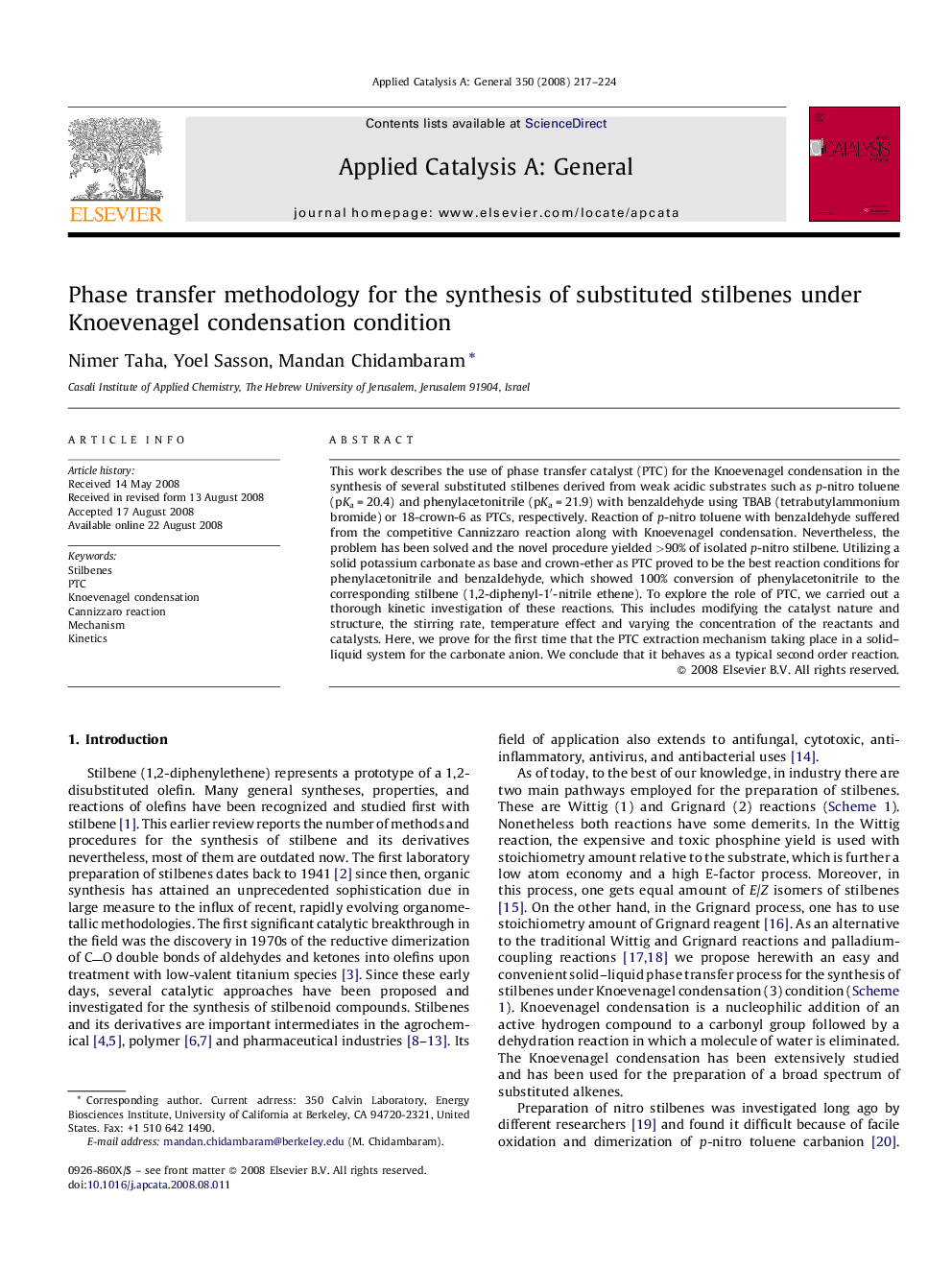| Article ID | Journal | Published Year | Pages | File Type |
|---|---|---|---|---|
| 43297 | Applied Catalysis A: General | 2008 | 8 Pages |
This work describes the use of phase transfer catalyst (PTC) for the Knoevenagel condensation in the synthesis of several substituted stilbenes derived from weak acidic substrates such as p-nitro toluene (pKa = 20.4) and phenylacetonitrile (pKa = 21.9) with benzaldehyde using TBAB (tetrabutylammonium bromide) or 18-crown-6 as PTCs, respectively. Reaction of p-nitro toluene with benzaldehyde suffered from the competitive Cannizzaro reaction along with Knoevenagel condensation. Nevertheless, the problem has been solved and the novel procedure yielded >90% of isolated p-nitro stilbene. Utilizing a solid potassium carbonate as base and crown-ether as PTC proved to be the best reaction conditions for phenylacetonitrile and benzaldehyde, which showed 100% conversion of phenylacetonitrile to the corresponding stilbene (1,2-diphenyl-1′-nitrile ethene). To explore the role of PTC, we carried out a thorough kinetic investigation of these reactions. This includes modifying the catalyst nature and structure, the stirring rate, temperature effect and varying the concentration of the reactants and catalysts. Here, we prove for the first time that the PTC extraction mechanism taking place in a solid–liquid system for the carbonate anion. We conclude that it behaves as a typical second order reaction.
Graphical abstractPreparation of p-nitro stilbene and 1,2-diphenyl-1′-nitrile ethene has been studied by phase transfer catalytic route using tetrabutylammonium bromide, NaOH and 18-crown-6, K2CO3 as phase transfer catalyst and base, respectively, under Knoevenagel condensation condition to prove the efficiency of the system than the current industrial processes such as Wittig and Grignard reaction. Figure optionsDownload full-size imageDownload as PowerPoint slide
